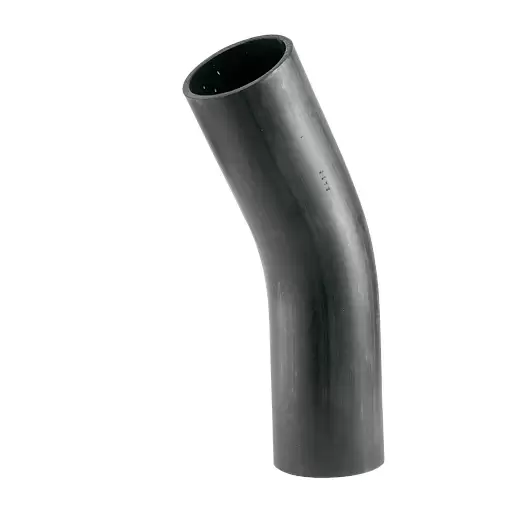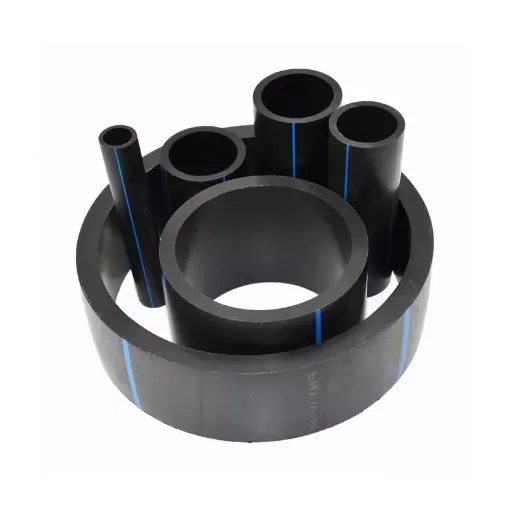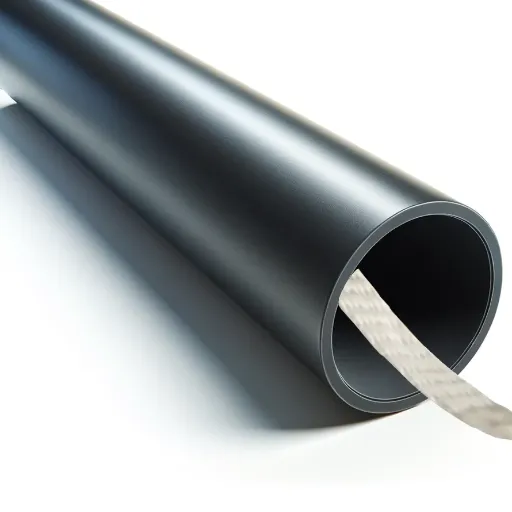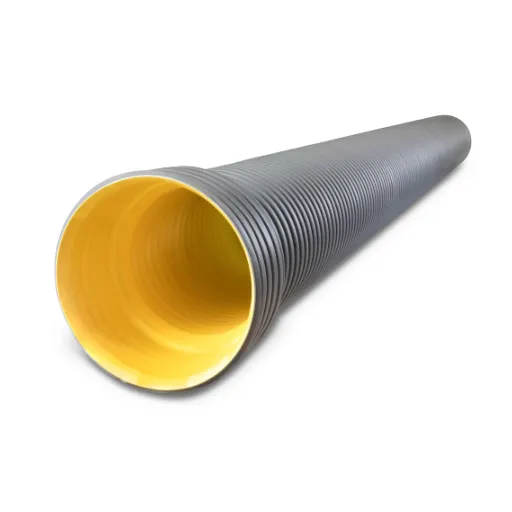High-density polyethylene (HDPE) pipes are widely recognized for their flexibility, durability, and efficiency across a variety of applications, from industrial systems to municipal infrastructure. One critical factor that engineers, contractors, and designers must consider when working with HDPE piping is the bend radius. Understanding this concept is vital for ensuring safe installations, maintaining structural integrity, and optimizing performance. This article dives into the essential insights surrounding the bend radius of HDPE pipes, providing you with the technical knowledge to make informed decisions in your projects. Whether you’re a seasoned professional or new to the field, this guide will equip you with a deeper understanding of this important aspect of HDPE pipe design and application.
What is the Bend Radius of HDPE Pipe?
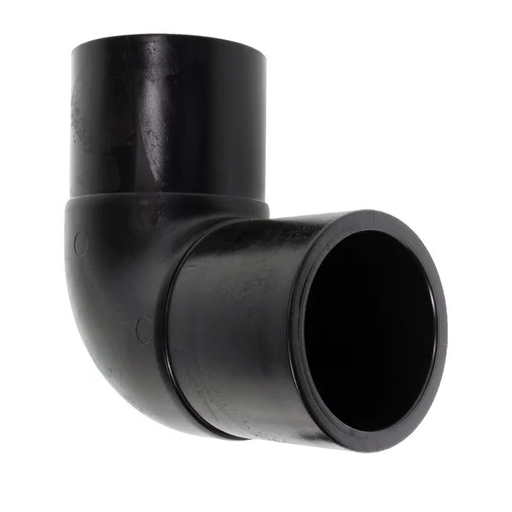
Defining Bend Radius in HDPE Applications
The bend radius for an HDPE (High-Density Polyethylene) pipe is defined as the smallest radius of curvature at which the pipe can be bent without inflicting any structural damage or impairment. This measurement is paramount regarding the flexibility of the pipe while routing it through tight spaces and intricate designs. Flexibility of the pipe can be expressed about the bend radius, which is typically stated as a multiple of the pipe’s outer diameter (OD), and for most cases, the value is somewhere between 20 and 25 times the pipe’s OD.
Maintaining the value of the bend radius within the preset status prevents damaging the pipe due to kinking, localization, and stress fractures. Many other external factors, such as temperature, internal pressure, and time of bending, affect the response of the pipe to curvature. For instance, the greater ease of bending of HDPE pipes in warmer temperatures may change the sensitive bend radius. These considerations must be made during the design and installation processes.
For understanding and applying the bend radius in HDPE systems, reference ASTM F714 and ISO 4427. Compliance with these standards will maintain pipe function and improve durability. Ensuring compliance with these standards allows for optimal use of the pipe in water distribution, gas pipeline, and industrial systems.
Importance of Understanding Bend Radius for HDPE
Bend radius is one of the most essential considerations when designing or installing High Density Polyethylene (HDPE) piping systems. It describes the minimum radius a bend can be performed on a pipe without negatively influencing its structural soundness or functionality. Surpassing this limit poses the risk of pipe deformation, stress accumulation, and eventual failure. Checking for compliance with the given bend radius requirements is critical for proper system efficiency and safety.
Adherence to the recommended radius of bends provides a variety of advantages, including improved flow efficiency, lowering chances of wear and tear, lower the stress borne by pipe walls. This is particularly true for water distribution or gas pipelines, which require both consistency and dependability over long durations. Guidelines and standards like ASTM F714 and ISO 4427 help install these installations by providing detailed instructions that ensure compliance with installation requirements.
Ignoring the bend radius either by mishandling or miscalculating can cause plastic deformation or buckling, which takes a toll on the shelf life of a piping system. Such problem may arise during scheduled maintenance or replacement of the pipelines. Using prescribed approaches and considering site-specific conditions of temperature and pressure helps operators curb excess strain while ensuring HDPE systems have reliable operational longevity.
How Bend Radius Affects Pipeline Performance
The bend radius of a pipeline made of High-Density Polyethylene (HDPE) directly influences its integrity and functionality. An optimal bend radius calculation allows the pipe to change direction while maintaining strength and flexibility. Within set limits, a pipeline will be able to maintain operational pressures without triggering unnecessary stress concentrations.
Ignoring specified minimum radius settings results in stress concentration within the pipe walls which causes deformation or failure of the material. In addition to these issues, misalignment of the pipe may hamper flow efficiency due to partial obstruction of the internal diameter. Also, excessive bending will increase the chances of stress cracking, especially in corrosive or temperature changing environments.
Optimal performance is achieved by the design and installation of a pipeline as per the manufacturer’s specifications and set regulatory requirements. Each section of the pipeline comes with a set diameter, operating conditions, and coolant with which precise calculations should be done for temperature and pressure. Although there is no single approach to achieving a recommended plan that will minimize damage, fluid transport, and maximize the system’s lifespan, these plans show the major importance of bend radius in efficiency and dependability of a pipeline.
How to Calculate the Bend Radius for HDPE Pipe?
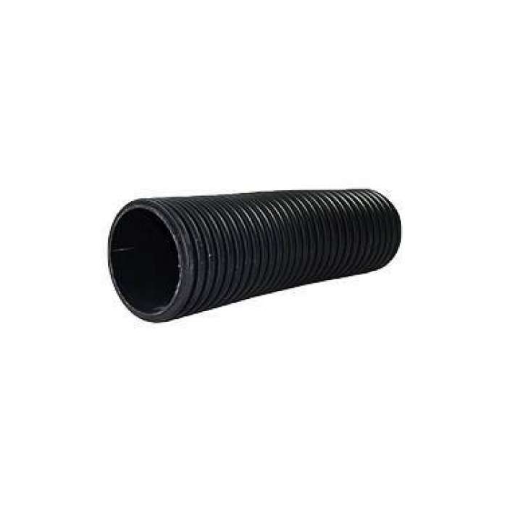
Factors Affecting the Bend Radius of HDPE
A blend of material attributes, dimensional features, and environmental conditions simultaneously impact the bend radius of HDPE (High-Density Polyethylene) pipes. These considerations incorporate:
- Pipe Wall Thickness (SDR): An HDPE pipe’s SDR or Standard Dimension Ratio determines the wall thickness about the diameter of the pipe. Pipes possessing lower SDR numbers (thicker walls) exhibit less flexibility and greater minimum bend radius, while higher SDR value pipes (greater flexibility) tend to suffer from bend over appendages.
- Pipe Diameter: The Nominal diameter of the pipe is directly proportional to the bend radius. Larger diameter pipes possess higher rigidity, hence requiring a larger bend radius to avoid undue stress and deformation while bending.
- Ambient Temperature: Temperature impacts the flexibility of HDPE pipe significantly. Increased temperature enhances pliability of the material allowing tighter bends, while, copious low temperature subject the matter to passive cracks under stress.
- External and Internal Pressure: Background conditions like, internal fluid pressure or external mechanical load, affect pipe stability during bend. Considerable internal pressure could mean a greater risk of restriction on the reduction of bend radius without compromise.
- Material Grade and Composition: A change in the additives used in the production of HDPE pipes and the grade of resin used will affect its elasticity and stress bearing capability. Higher grade polymers with good mechanical properties tend to stretch out more before breaking when subjected to tightening bends.
- Bend Angle and Method of Installation: In addition to the methods of bending (along with the application of heat or cold bending techniques), the desired angle of the bend also correlated with these factors. Applying excessive angles or improper bending techniques will tend to kink or buckle (particularly in bigger pipes) points on the pipe.
Knowing what these factors are, as well as avoiding excessive bend radii as set up by the manufacturer, ensures that the minimum bend radius is not exceeded. When it comes to precise calculations, it is best to adhere to standards or documents outlining technical engineering specifications, together with operational needs and conditions peculiar to the site. Adopting these rigorous practices will lead to enhanced safety, performance, and longevity of pipelines.
Steps to Calculate the Minimum Bend Radius
- Identify the Pipe Material and Dimensions: Check the specification sheets or design documents that contain the information about the pipe. Analyze the material properties of the pipe regarding its flexibility, tensile strength, and tendency to deform as these attributes affect its bending capabilities.
- Calculate Based on Material-Specific Ratios: For most materials, a recommended minimum bend radius is calculated using a standard multiplier relative to the outer diameter. For instance, HDPE pipes often use a multiplier of 20-25, while certain metallic pipes may require larger radii depending on their rigidity. Multiply the OD by the standard multiplier to derive the minimum bend radius.
- Take Into Consideration the Operating Conditions: As part of the calculations, factors such as the operating temperature, pressure, and external forces should be analyzed. Higher temperature increases the pliability of certain materials, thus enabling tighter bends while extreme cold makes some materials brittle requiring larger radii. In the same manner, high-pressure systems may require more conservative bend radii to maintain structural integrity.
- Field Trials and Testing Validation: Testing, be it physical or field testing, should follow modeling and verification processes. A section of the pipe can be bent to the computed radius and checked for signs of stress like cracks, buckling or wall thinning. The real world nature of the test means that the expected operational conditions of the bend radius can be confirmed.
With these processes, the safest and most precise calculations for a bend radius can be made. This attention to detail prevents material failure, increases the lifespan of the pipeline all while maintaining the standards set out by the industry.
What is the Minimum Bend Radius for HDPE Pipe?
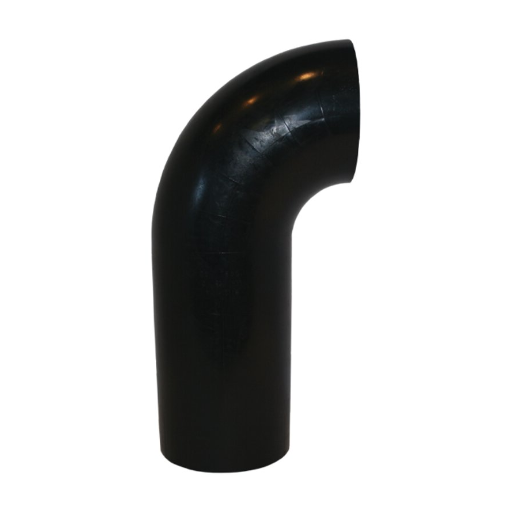
Understanding Minimum Allowable Bend Radius
The minimum allowable bend radius for HDPE (High-Density Polyethylene) Pipe is a critical factor related to the pipe’s versatility and ability to withstand various forms of stress. Strain or strain can be used to describe the way the structure reacts when subjected to stress. Bend radius is a term that defines the minimum radius around which a bend can be made on the pipe without causing damage to the structure. This can be said to be measured by the ratio of the pipe’s outside diameter (OD) and a specific multiplier for the material.
Industry norms and construction guidelines stipulate that the minimum bending radius for HDPE pipes is 20-25 times the outer diameter of the pipe, based on the pressure rating of SDR (Standard Dimension Ratio) of the pipe. For instance, an SDR 26 pipe, which has an outer diameter measuring up to 200 mm, would have a minimum bend radius measuring up to approximately 4000-5000 mm, which is quite a reasonable value. It must be noted that the radius does change because of some factors, like temperature and the maintained internal pressure during the bending.
Not noting the minimum bend radius can result in material fatigue, stress cracking, or stress risers, particularly when the pipe is subjected to operating pressure or varying temperatures range. As outlined above, employing proper handling and installation techniques are vital with regard to pipeline safety, reliability, and effectiveness throughout its service life.
Comparison with Other Plastic Pipes
While comparing the flexibility, durability, chemical resistance, and application of HDPE pipes with other types like PVC, CPVC, PP, and PE, considerations are made regarding all these factors.
| Aspect | HDPE | PVC | CPVC | PP | PE |
|---|---|---|---|---|---|
|
Flexibility |
High |
Moderate |
Low |
Moderate |
High |
|
Strength |
Very High |
High |
Moderate |
High |
High |
|
UV Stability |
Excellent |
Poor |
Poor |
Moderate |
Good |
|
Temp. Tolerance |
-40°C to 80°C |
Up to 60°C |
Up to 80°C |
Up to 90°C |
Varies |
|
Connection |
Heat Fusion |
Cement/Glue |
Cement/Glue |
Welding |
Welding |
|
Usage |
Gas, Water, Sewage |
Water, Drainage |
Hot Water, Chemicals |
Industrial, Plumbing |
Irrigation, Gas |
|
Expense |
Higher |
Lower |
Moderate |
Moderate |
Varies |
Impact of Pipe Diameter on Minimum Bend Radius
The minimum bend radius for a pipe tends to increase as the diameter of the pipe increases due to possible structural damage or material failure. In the case of plastic pipes like Polyethylene (PE) and Polyvinyl Chloride (PVC), the minimum bend radius is often stated as a multiplier of the pipe’s outer diameter (OD). An example is the industry standard’s suggested minimum bend radius of 20-30 times the PE pipe’s OD, varying by material grade and wall thickness.
An increase in pipe diameter leads to increased intra-pipe stress when bending, making the pipe stiffer, less flexible, and more prone to internal stress. Subsequently, breaching the set minimum bend radius will likely cause material strain, cracking, or, more so, permanent deformation under a dynamic load or change in temperature.
On the other hand, a small diameter pipe is less stiff and has more flexible ability in regards to increased bend radius without causing intra-pipe stress. Though small-diameter pipes provide more freedom in regards to radius, there are still minimum bend radii restrictions if there is concern for long term damage in the form of micro-cracking that can jeopardize the integrity of the pipeline and, consequently, trigger failure across the system.
For maximum efficiency and longevity, engineers need to balance the pipe diameter, permissable bend radius, internal pressure, and even external temperature. There are sophisticated simulations and testing procedures available today which determine specific bending limits for different types and sizes of pipes, meeting both industry standards and requirements unique to the location.
How Does the Bend Radius Affect Pipe Installation?
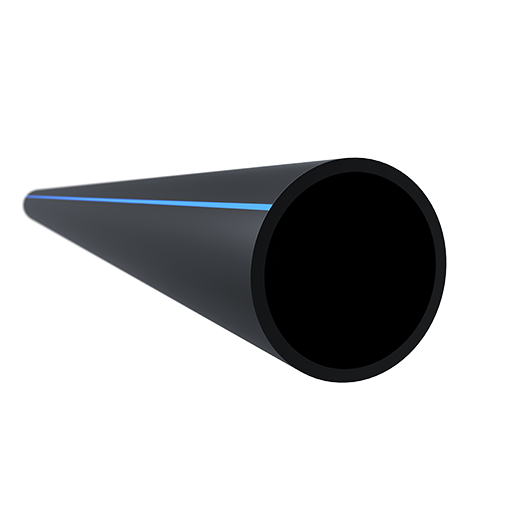
Significance of Bend Radius in Trenchless Installation
The worry over the bend radius is notable when it comes to axial drilling and pipe bursting. These two techniques simplify the trenchless method of pipe installation. It also affects the way stress is distributed within the boundaries of the pipe surface as well as the strain undertaken during installation, sustained operation, and enduring structure. Excessive tensile and compressible forces can be the cause of cracking, rupturing, or diminishing capability owing to stresses attending stripping over the allowed degree of doing work the bent radius can reach.
HDPE, PVC, and steel pipes soften the cry mud, wherein the wall thickness and flexibility of the formations involved are considerably valued. Indentation to these basics of design specification ensures optimally designed functions on hydraulic performance while averting damages due to cracks.
With advanced engineering, software tools, and subsurface conditions such as soil type, load, and pressure, dynamic models of pipes and their paths can be created. The simulations have shown that there is a predicted maximum allowable bend and inflection points along the pipe—anything greater than this would overstress it.
Challenges in Installing HDPE with Tight Bend Radius
The installation of HDPE pipes with a tight bend radius is challenging in terms of structural and operational balance. The primary challenge is the material’s sensitivity to stress concentration at the point of curves due to handling, overbending, or improper care that leads to cracking, deformation, or long-term structural fatigue. Advanced finite element modeling (FEM) revealed that excessive bending led to localized strain which is more pronounced to the pipe’s elastomeric properties. Recent engineering research suggests that a bend radius of at least 20 times the pipe’s outer diameter (20D rule) greatly mitigates risk, though specific site conditions may require deviation from the theoretical.
Moreover, conditions such as soil thermal conductivity, moisture retention, and external load factors exacerbate the problem. For example, regions on the higher side of the groundwater table or shifting soil stratigraphy impose cross-sectional curvature stresses that require strong anchor systems to limit pipe movement. Infrastructure stress relief techniques like controlled heat fusion joining and pulling segments through directional drills greatly neutralize damage during installation.
Operational logistics is yet another concern. It is critical not to exceed the tensile strength given by the manufacturer during pipe installation, since exceeding it may cause elongation or material thinning. Equipment calibration is extremely important, especially in trenchless installations, as mechanical rigs can exert forces well beyond the total safe value if there are any misalignment or lubrication issues with the conduits.
Best Practices for Bending HDPE Pipes
- Learn the Minimum Bend Radius Accurately: While working with HDPE pipes, the minimum bend radius is particularly important. This value represents the least radius to which the pipe can be bent without impairing the pipe’s structural integrity or undergoing material fatigue. Generally, for a standard HDPE pipe, this is calculated as a multiple of the pipe’s outer diameter; it often ranges between 20-25 times for pressurized pipes. Following this guideline helps ensure that the pipe can endure internal pressure and maintain optimum performance over time.
- Control the Temperature During Installation: As with other thermoplastic materials, HDPE properties are temperature-sensitive. Increasing the temperature improves flexibility, but weakens the material, which makes proper control imperative. The ideal bending range is between 20°-30°C. Avoid extreme heating techniques, as they tend to change the crystalline structure of the pipe, weakening its resistance to cracking or buckling under load.
- Use Proper Mechanical Assistance: Bending formers and pipe rollers are some of the most common tools of mechanical assistance. Improper use of tools or excessive force ignores the weakening of the pipeline due to uneven stress distribution and local wall thinning.
- Avoiding Bending Too Far and Kinking: Bending HDPE pipes too far will lead to their minimum bend radius being surpassed and thus inflicting deformities or kinks which will be failure points while in use. Bend the pipe gradually with uniform force while maintaining structural integrity at all levels.
- Curvature, Alignment and Path Clearance Inspecting: Misalignment results in unwanted tension for above ground installations or bending for trench based setups. Long pipelines are prone to binding or excessive tension and these particular issues can be dealt with using precise alignment and pathway clearance that can be achieved through laser or GPS surveying.
- Managing Outside and Inside Condition: Soil pressure or any weight being placed onto the HDPE pipes together with the internal pressure being exerted by the system need to be considered when bending the pipes. In order to make sure that the stresses being imposed are safe for operational limits, real-time monitoring apparatus need to be installed. These can be strain gauges or pressure sensors.
- Bending Completion Testing: Every bend placed on the pipe should be followed by a meticulous inspection session. Methods like ultrasonic testing or hydrostatic pressure can easily reveal deformities inflicted due to bending during the procedure. These include micro cracks, thinning, and incomplete bonding in fusion points.
These outlined best practices ensure that engineers and contractors achieve dependable and durable HDPE installations without the worry of pipe deformation. Adhering to these guidelines offers seamless functionality across multiple operational scenarios as well as environmental factors.
What are the Material Properties Influencing the Bend Radius of HDPE Pipe?
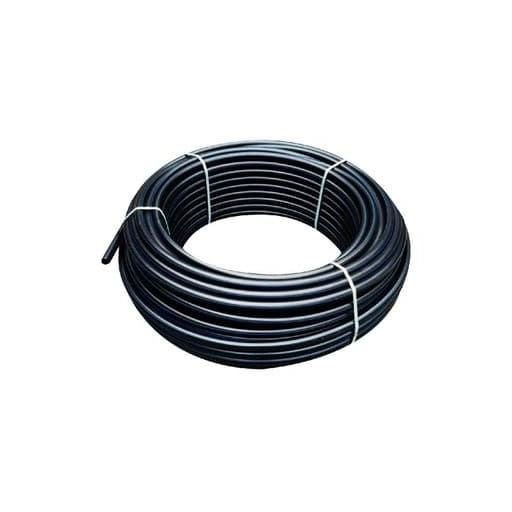
Flexibility of HDPE and Its Impact on Bend Radius
Particular areas of construction that require pipes to be flexed while keeping the structure intact are where High-Density Polyethylene (HDPE) is used, primarily due to its flexibility. The molecular structure of bonds in the polymers of HDPE allows for deformation under stress, which contributes to its flexibility. However, the bend radius of these pipes, or the level of curve it can take without kinking, is also dependent on the modulus of elasticity of the material, wall thickness, and pipe diameter.
Based on studies conducted by various disciplines of engineering, it has been concluded that the minimum bending radius in HDPE pipes should be two to three times larger than the outside diameter of the pipes. This ratio allows limitations on microstructural damage due to stress within the material. Along with that, ambient temperature also impacts the overall flexibility of the pipes; higher temperature increases flexibility, whereas lower temperatures reduce it, making fracture more likely under rigid bending stress.
Research and computation suggest that engineers can fine-tune their optimization strategies for installation processes and reasoning based on material properties. For example, in trenchless installation applications wherein HDPE pipes must be pulled through stringent pathways, determining appropriate bend radius calculations is vital for pipe performance and durability. Stakeholders rely on engineering guidelines and material data, accenting the need for balance between design requirements and functional dependabili,ty achieving optimized structural design.
Role of Polyethylene Composition in Bend Radius
The composition of polyethylene (PE) is especially important when determining the bend radius of HDPE pipes. The material characteristics that influence the density and molecular weight, as well as the degree of crystallinity, affect the flexibility and the mechanical properties of the pipe when subjected to bending. Engineers require knowledge of these factors so that they ensure the pipes designed are meant for specific applications, guaranteeing that all pipes have an appropriate degree of sturdiness and flexibility.
- Molecular Weight Distribution: With an increase in the molecular weight, the HDPE gains more tensile strength and gage resistance, which affect the degree of deformation without structural failure.
- Density of the Polyethylene: The classification of polyethylene, whether high, medium, or low, has a direct influence on the density. Lower densities are highly flexible while the high-density is stiff, therefore allowing limited room for curvature.
- Crystallinity: Crystallinity refers to the arrangement of the polymer chains in the material. Enhanced rigidity ensues from an increase in the degree of crystallinity which leads to a larger minimum bend radius, while lower degree of crystallinity increases flexibility.
- Bend Radius for Materials withstanding High Temperatures: The polyethylene structure defines its thermal properties along with the bend radius within a given temperature range. Increased temperature resistance strengthens the structural integrity of the pipe’s bend radius specifications.
- Modification of Plastic Additives: Stabilizers, plasticizers, and fillers impact the flexibility and hardness of HDPE. Such additives can enhance the bending capabilities of pipes by lessening stress concentrations during installation.
Considering the properties of polyethylene blends, designers and engineers can select the most appropriate material from industry standards while retaining adequate strength and functionality.
Long-term vs. Short-term Bend Radius Considerations
Pipeline design incorporates multiple factors, among which the minimum bend radius and compromise criteria stand out. Specific issues like thermal expansion and material creep elasticity over extensive periods are considerations with a long-term focus. For instance, HDPE materials progressively abate stress due to time, resulting in strain-controlled load reallocation, which averts long-term damage in buried installations.
Short-term focus may encompass a shift in scope to address temporary loading, installation, and even kinking. This form of bending requires assessment on the pipe’s resistance to cracking while being placed under tension and bounds imposed while not in use. The functional capability of the pipe around over-flexing, particularly during handling or installation, is critical.
Generally, recent modeling tests reveal that long-term allowance bend radius for HDPE pipes widely accepted average predominantly falls around twenty to twenty five times the outer diameter of the pipe. Moreover, the range of bound extend to ten to twelve times the diameter for short-term radius restriction depending on grade of materials and other environmental factors. Adjusting these factors to the baseline design equations ensures fulfillment of operational conditions while piping reliability is upheld throughout the lifecycle.
References
Frequently Asked Questions (FAQ)
Q: What is the bend radius of an HDPE pipe?
A: The bend radius of an HDPE pipe refers to the minimum radius to which the pipe can be bent without causing damage. This is typically measured as a multiple of the pipe’s outside diameter, often stated as 25 times for HDPE pipes.
Q: How does the minimum long-term bend radius affect HDPE pipe performance?
A: The minimum long-term bend radius is crucial for maintaining pipe performance as it ensures the pipe can be bent without risking damage or compromising its structural integrity over time.
Q: Can HDPE pipes be bent to a tighter radius than recommended?
A: While HDPE pipes can be bent, bending them to a tighter radius than recommended can lead to problems such as kinking or reduced longevity, affecting their performance and durability.
Q: What are the key properties of HDPE that allow it to be bent?
A: Properties of HDPE, like flexibility, corrosion resistance, and its ability to withstand various environmental conditions, contribute to its ability to be bent without losing structural integrity.
Q: Why is the long-term bend radius for HDPE important during installation?
A: The long-term bend radius for HDPE is important during installation to ensure the pipe can efficiently handle changes in direction and avoid obstacles without incurring damage.
Q: What is the minimum bend radius of HDPE, and how is it determined?
A: The minimum bend radius of HDPE is typically determined as a multiple of the pipe’s diameter, commonly 25 times, to ensure the pipe’s structural integrity when bent.
Q: How does the bending process of HDPE pipe help in avoiding obstacles?
A: The bending process allows HDPE pipes to be curved along routes that avoid obstacles, enabling more efficient and flexible installation paths.
Q: What precautions should be taken when bending HDPE pipes?
A: When bending HDPE pipes, it is important to adhere to the recommended minimum bend radius and ensure the curvature of the pipe is even to prevent kinking and maintain performance.
Q: How does the ability to bend affect the longevity and performance of HDPE pipes?
A: The ability to bend allows HDPE pipes to adapt to different terrains and installation requirements, contributing to their longevity and maintaining their performance over time.
Q: What are the implications of bending HDPE pipes below the specified radius?
A: Bending HDPE pipes below the specified radius can lead to potential issues such as increased risk of kinking, which can compromise the pipe’s structural integrity and reduce its lifespan.



